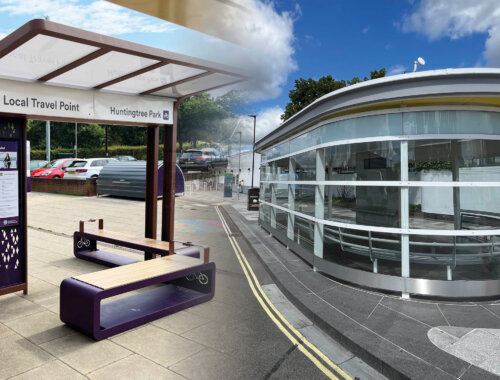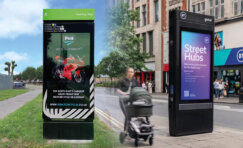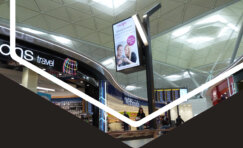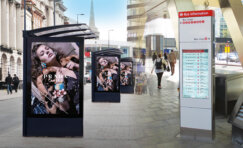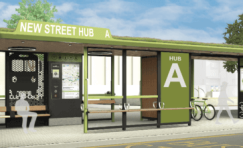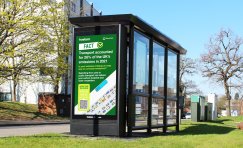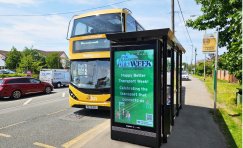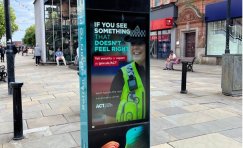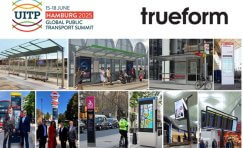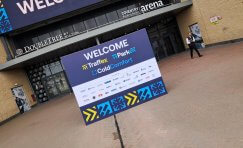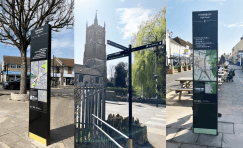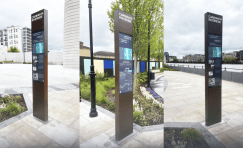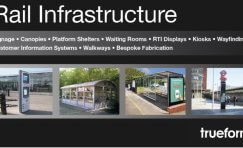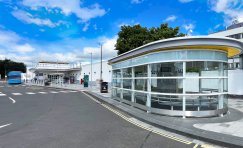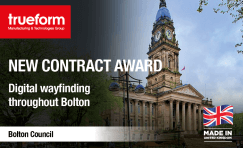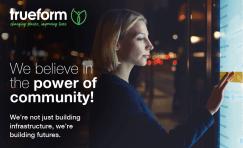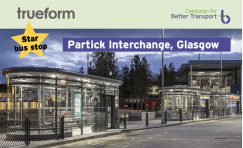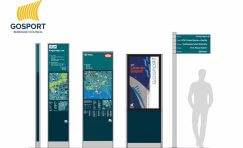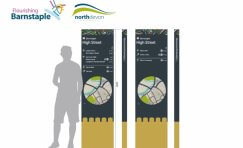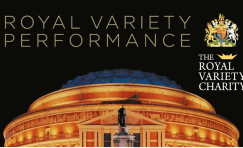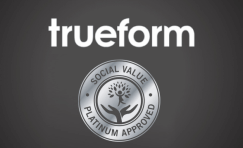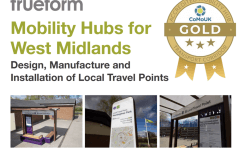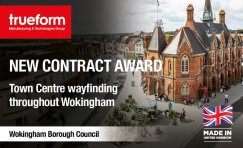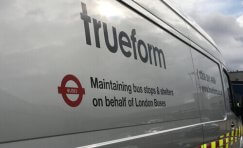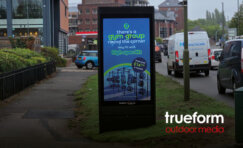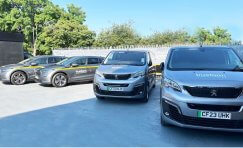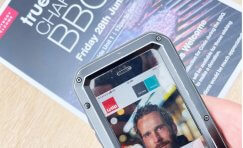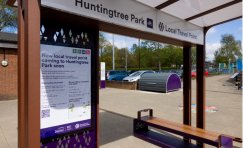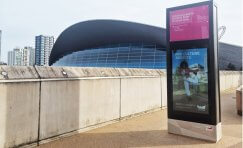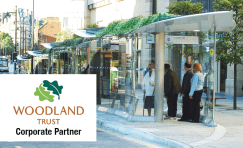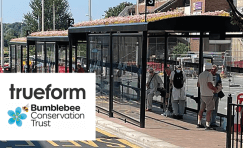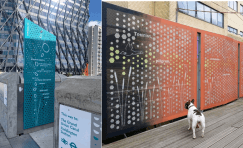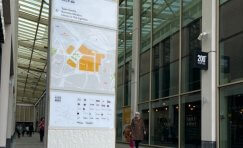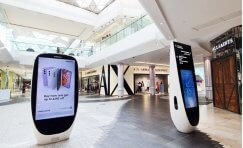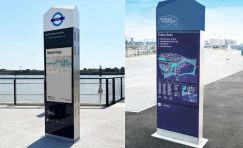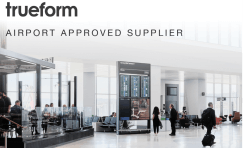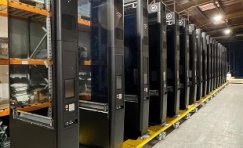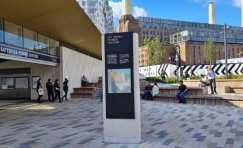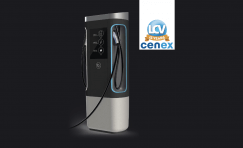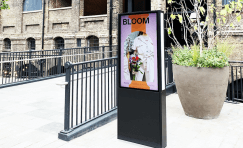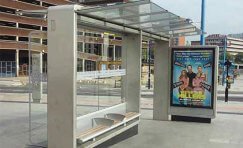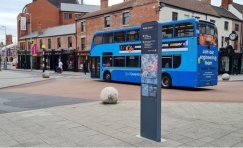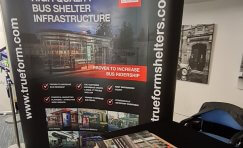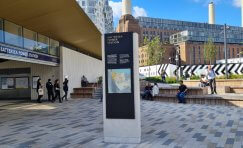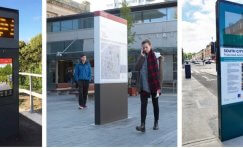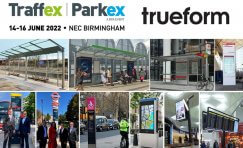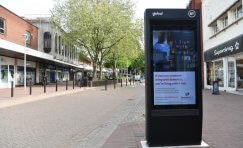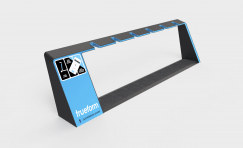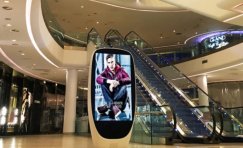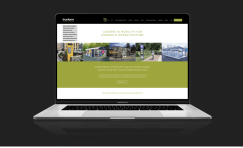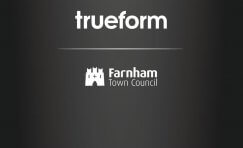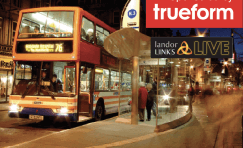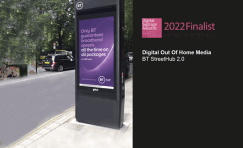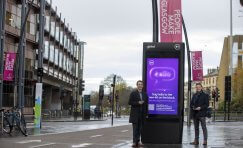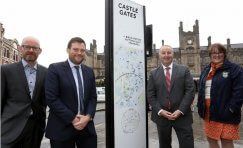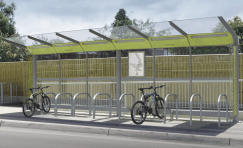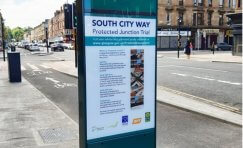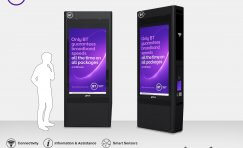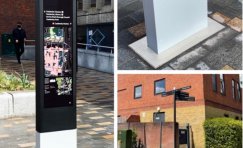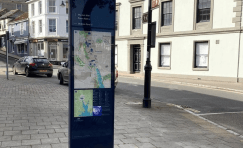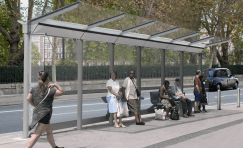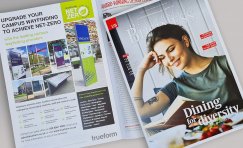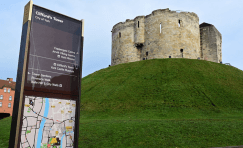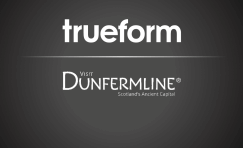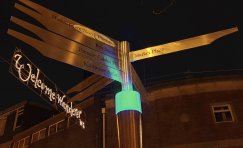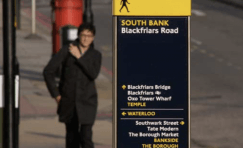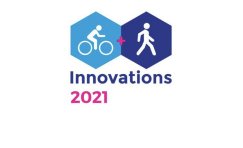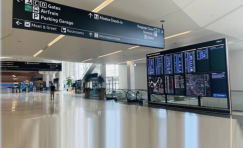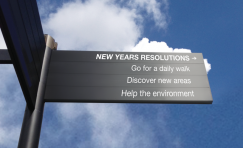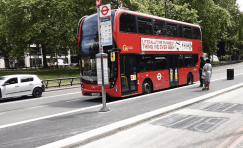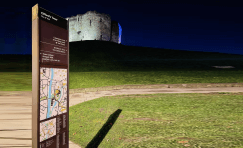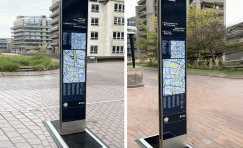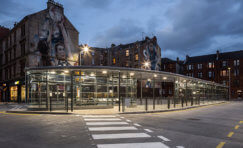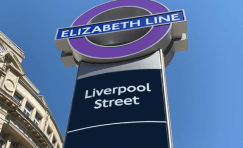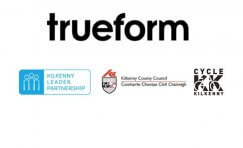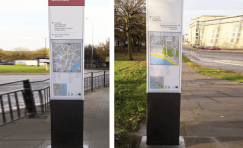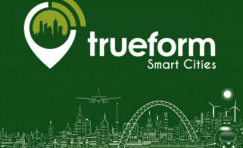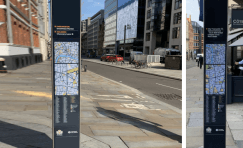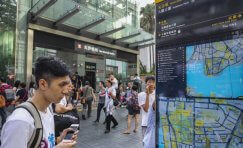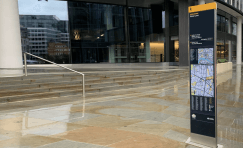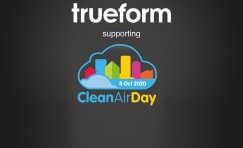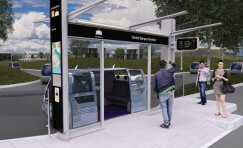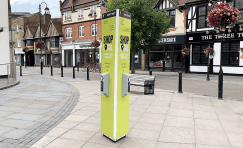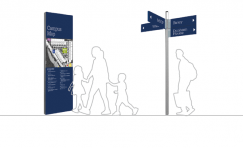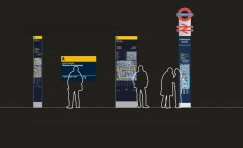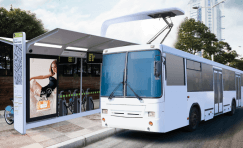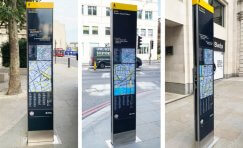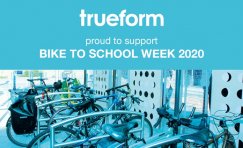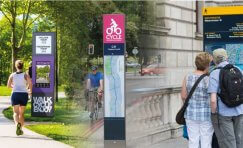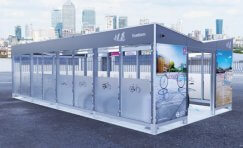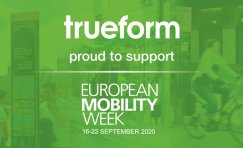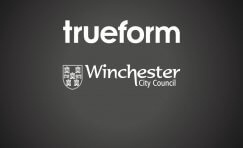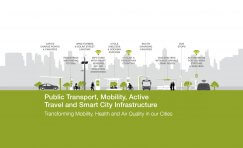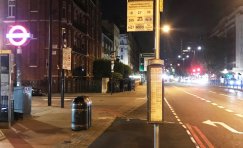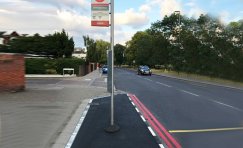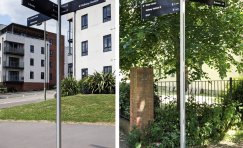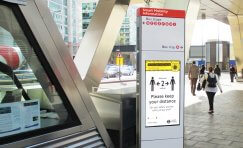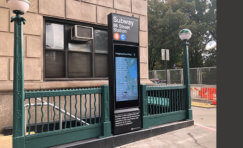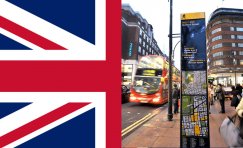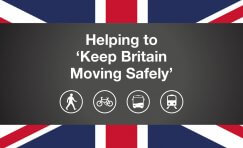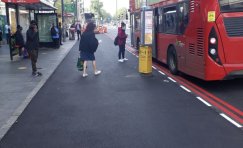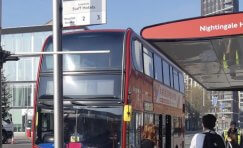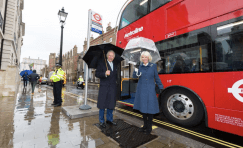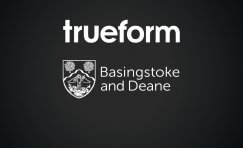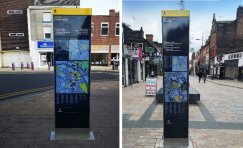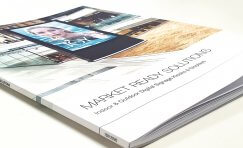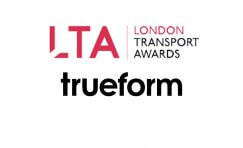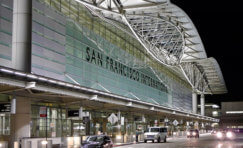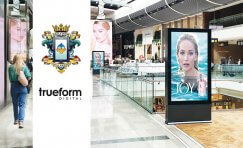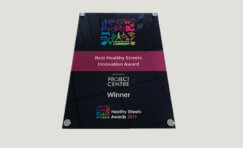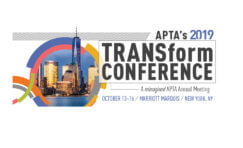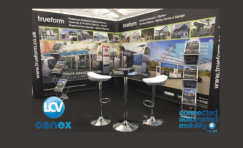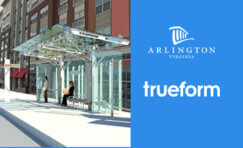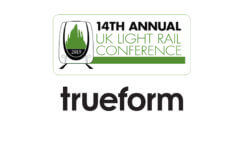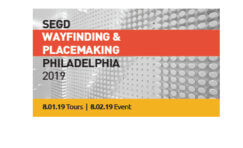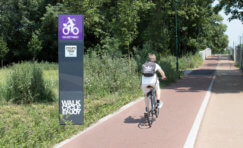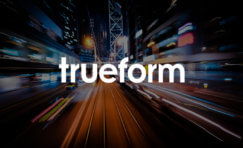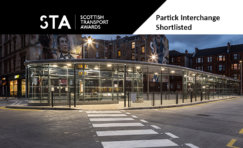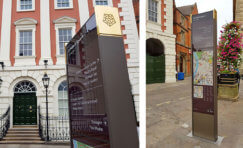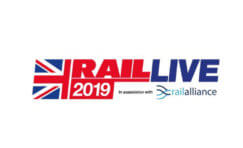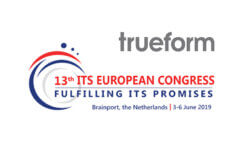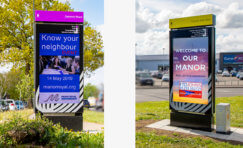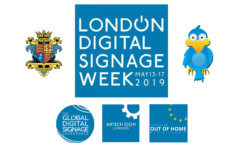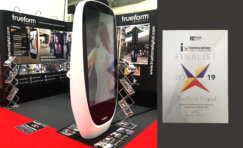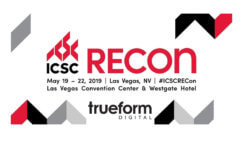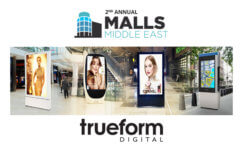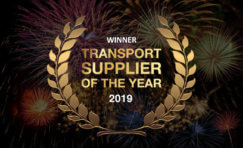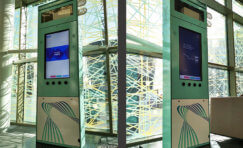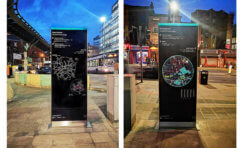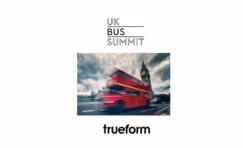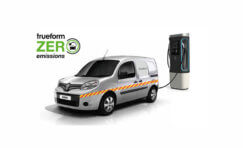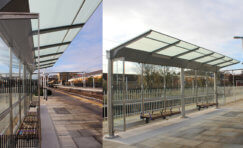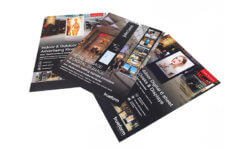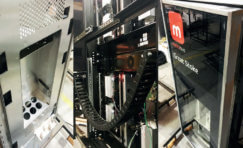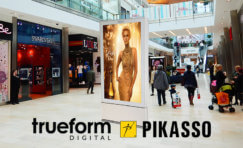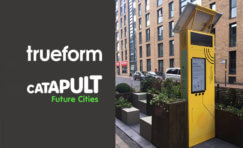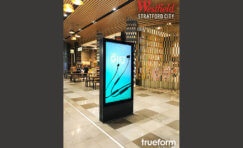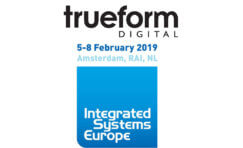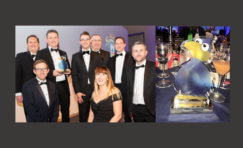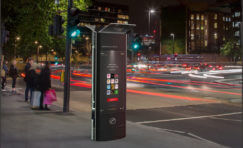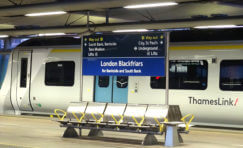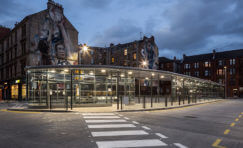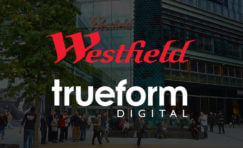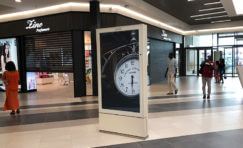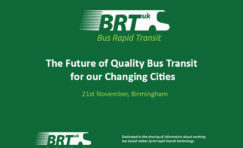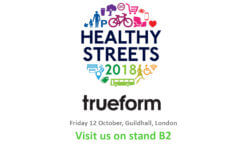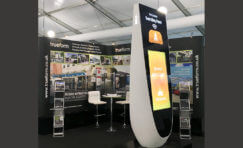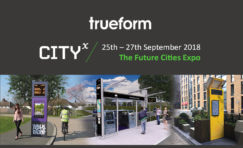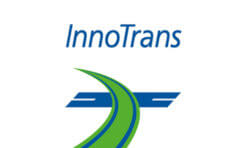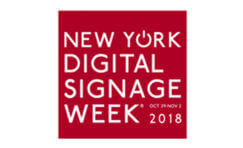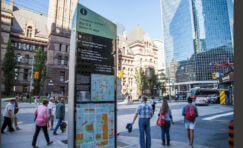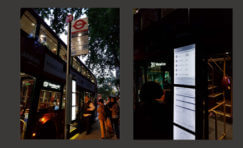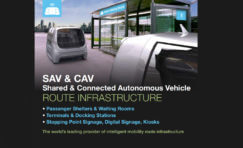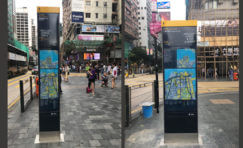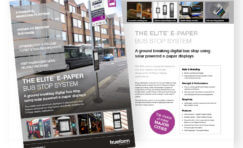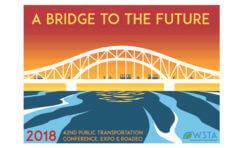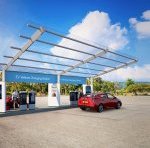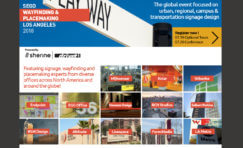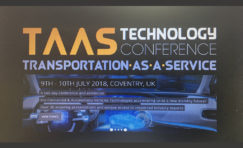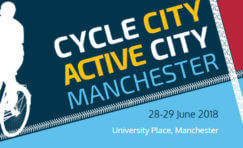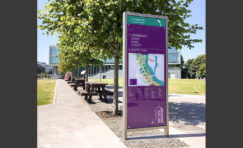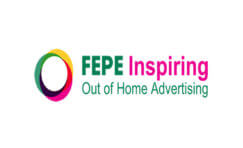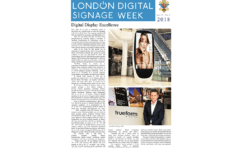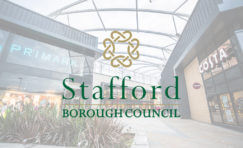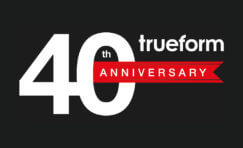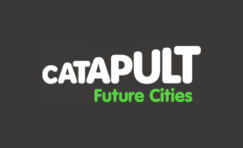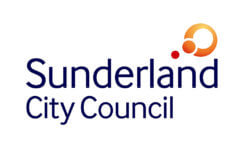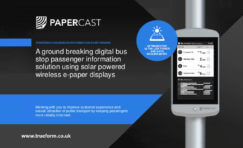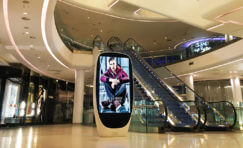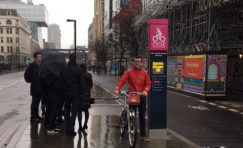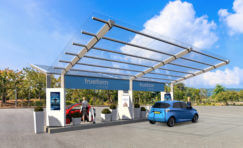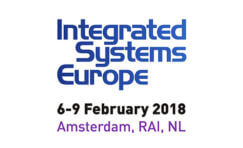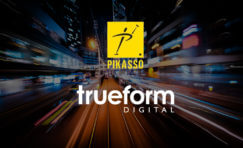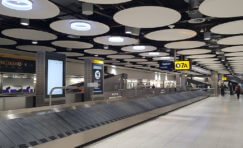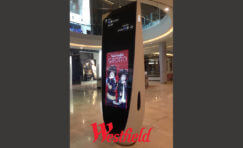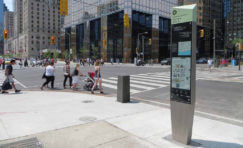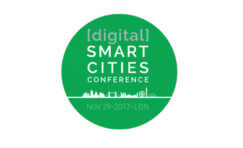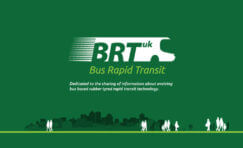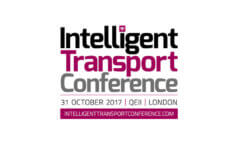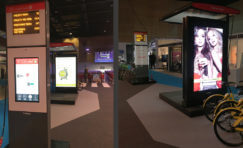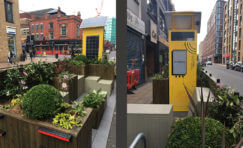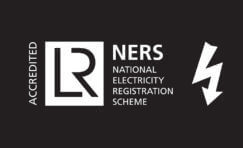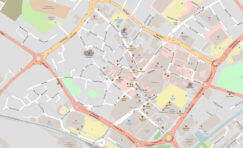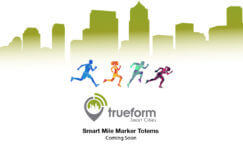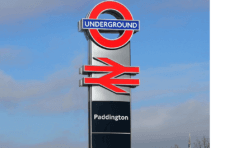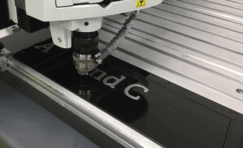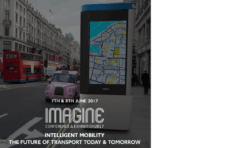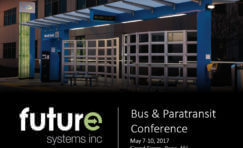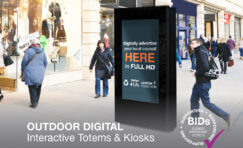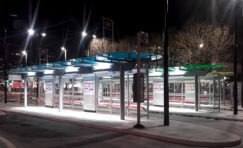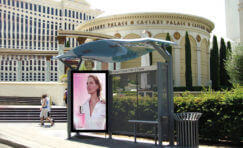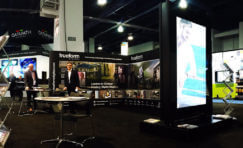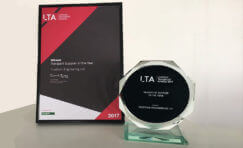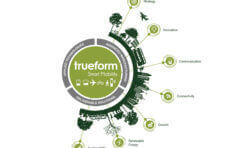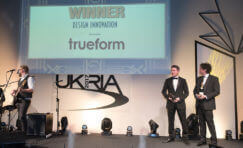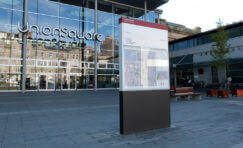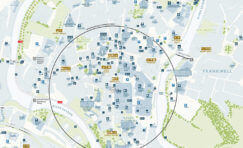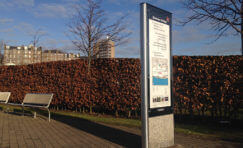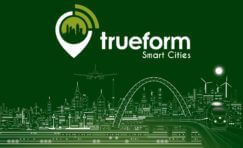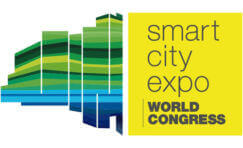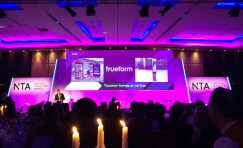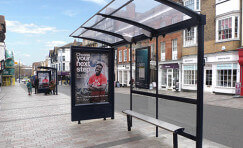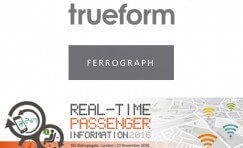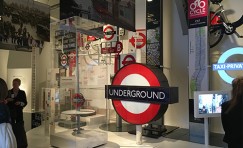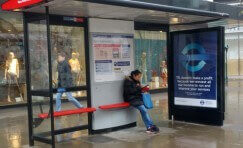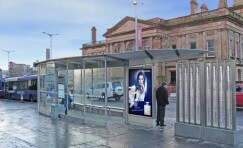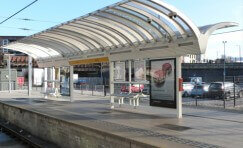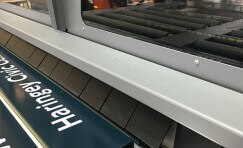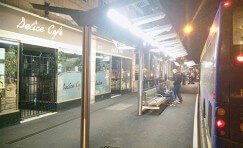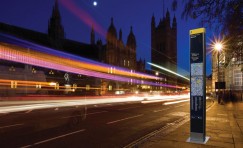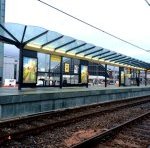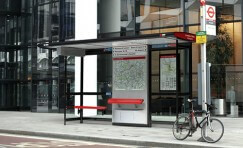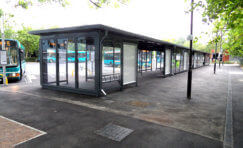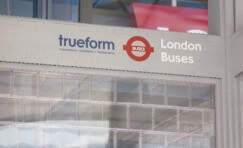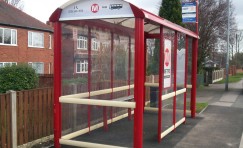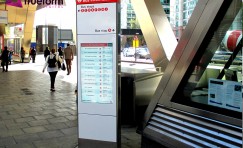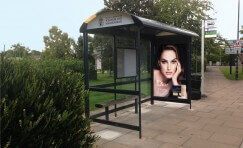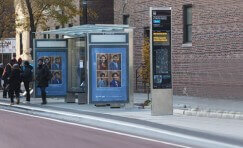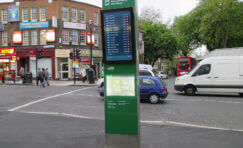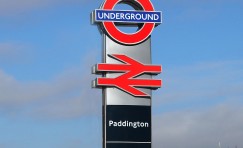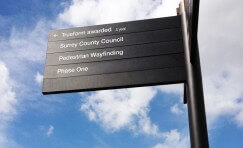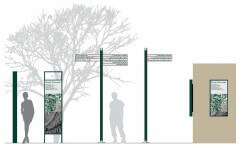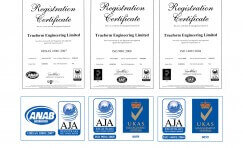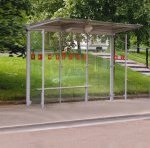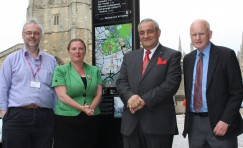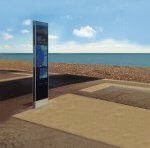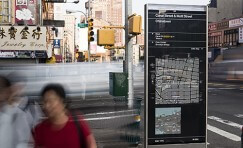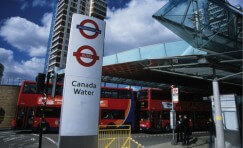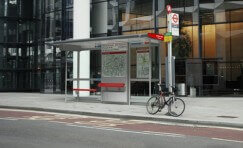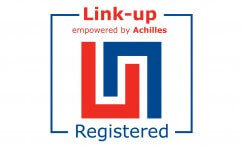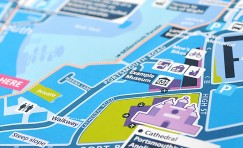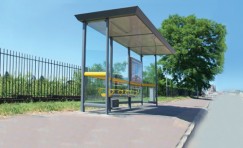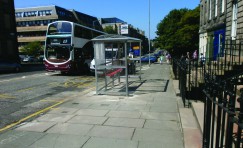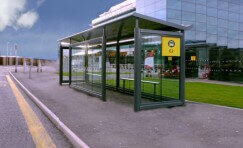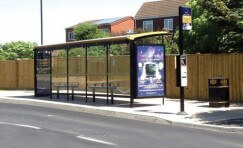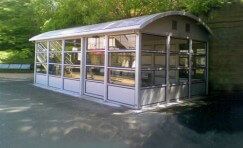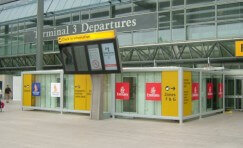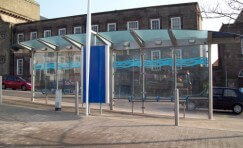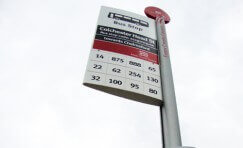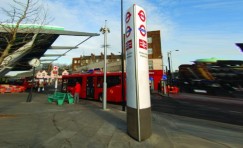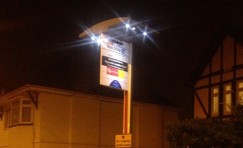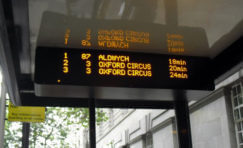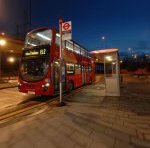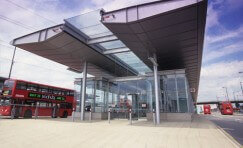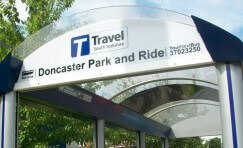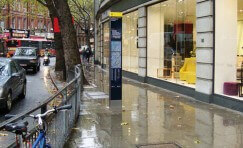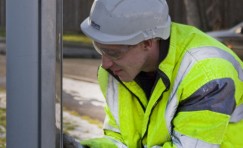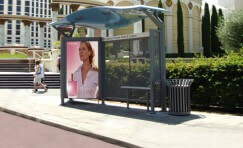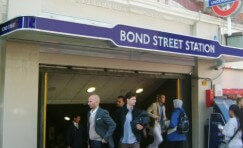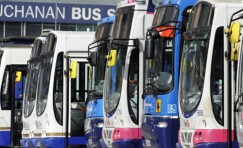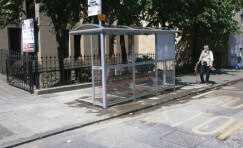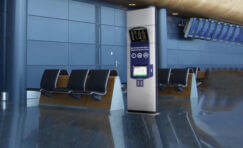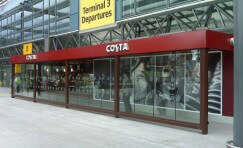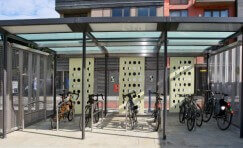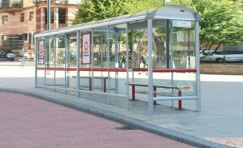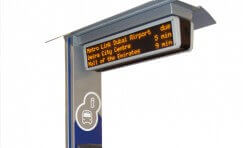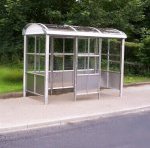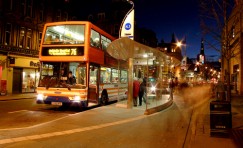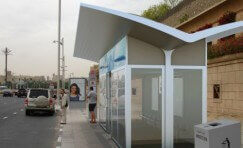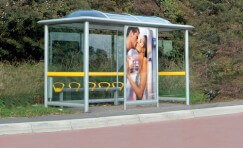
Smart Bus Shelters, An Evolution : From Functional Stops to Mobility Hubs
Smart bus shelters have come a long way. No longer just a basic bench under a canopy, today’s modern shelter is evolving into a smart mobility hub, an integrated part of urban infrastructure that supports public transport, sustainable mobility, active travel, and digital communication.
At Trueform, we’ve been at the forefront of this transformation: designing, manufacturing, and installing intelligent on-street infrastructure that meets the demands of today’s transport networks and tomorrow’s smart cities.
In this blog, we’ll explore how bus shelters have evolved, examine the factors driving change, and look ahead at how Trueform is helping cities transform stops into connected mobility nodes.
The Early Days: Functional and Modular
Originally, a bus shelter’s role was simple: to provide passengers with protection from the elements while waiting for a bus. Over time, manufacturers began introducing modular designs, improved materials, and more durable, aesthetically pleasing structures.
These shelters met the core requirement, safe, reliable, and comfortable waiting environments, but the expectations of both passengers and transport authorities began to grow.
Integration of Passenger Information and Branding
As transport networks expanded and user expectations increased, bus shelters evolved beyond their basic function. Real-time passenger information displays, advertising panels, lighting, and accessible seating became standard features.
Branding also grew in importance. Shelters became visual extensions of a city’s transport identity, creating consistency across the public realm and improving the perception of public transport as modern and reliable.
The Shift to Smart Mobility Infrastructure
Smart Cities and Connectivity
Cities are increasingly demanding infrastructure that is connected, data-enabled, and part of a digital ecosystem. Modern shelters are now being specified with sensors, digital screens, and communications technology. They act as smart nodes within a city network, offering WiFi, supporting digital wayfinding, and even integrating with autonomous transport systems.
Sustainable and Low-Carbon Mobility
Sustainability is at the heart of modern transport infrastructure. Smart bus shelters are now being designed and built using environmentally responsible materials, solar-powered lighting, and low-carbon manufacturing methods. Trueform’s range of eco shelters exemplifies this shift, helping cities meet carbon reduction targets while providing safe, efficient, and energy-independent passenger facilities.
Multi-Modal and Active Travel Integration
The role of the bus shelter is no longer confined to bus passengers alone. It is now a key component in wider mobility hubs that connect different modes of transport, bus, tram, rail, cycling, and walking. Modern shelters can integrate with bike-share stations, digital wayfinding totems, and even electric vehicle charging canopies, helping cities deliver seamless, multi-modal transport networks.
What This Means for Transport Authorities and Cities
The evolution of bus shelters presents new opportunities, and new responsibilities, for cities and transport authorities.
· Future-proofing infrastructure: Investing in shelter designs that accommodate new technologies ensures long-term value and adaptability.
· Enhancing passenger experience: Modern shelters communicate care, safety, and reliability, improving public perception and encouraging public transport use.
· Operational efficiency: Modular construction, remote monitoring, and easy maintenance reduce operational costs and downtime.
· Sustainability leadership: Low-carbon, solar-powered, and recyclable materials help cities meet ESG and climate goals.
· Integrated mobility: By viewing shelters as part of the wider mobility ecosystem, cities can create smoother transitions between transport modes.
Trueform’s Approach
At Trueform, we combine decades of experience with cutting-edge design and manufacturing capabilities to deliver smart bus shelters that are robust, functional, and future-ready.
· Striking, modern designs, the shelter is the shop window for the bus service, providing valuable kerb appeal to attract and retain new passengers
· UK manufacturing ensures total quality control and reduced environmental impact.
· Modular and technology-enabled design allows for integration of RTI, CCTV, solar lighting, and interactive displays.
· Comprehensive service support includes design, installation, logistics, commissioning, maintenance, and remote monitoring.
· Sustainability focus drives our use of eco-friendly materials, energy-efficient systems, and carbon-neutral production processes.
· Custom solutions can be tailored to local authority, operator, or developer specifications, ensuring every installation meets its environment perfectly.
Looking Ahead: The Future of Bus Shelters
The next generation of smart bus shelters will push the boundaries of what’s possible in urban mobility. Expect to see:
- Inspirational, new, modern architectural designs, fully in keeping for other contemporary forms of mobility infrastructure, matching customer expectations.
- Digital passenger environments, through Wi-Fi, 5G small cells and smart sensors.
- Energy-positive shelters generating and storing renewable power to support nearby infrastructure.
- Adaptive environments responding to real-time weather, lighting, and occupancy data.
- Data-driven insights enabling cities to monitor usage and improve network planning.
- Integration with autonomous vehicles, transforming shelters into intelligent, connected pick-up and drop-off hubs.
At Trueform, our ongoing innovation and investment in smart city technologies mean that the shelters we build today, are ready for the mobility networks of tomorrow.
The bus shelter has evolved from a simple stop to a cornerstone of connected, sustainable urban mobility. As expectations rise and cities become smarter. Shelters will continue to play a critical role in shaping the passenger experience and enabling greener, more efficient travel.
At Trueform, we’re proud to be leading this evolution. Designing and manufacturing the smart mobility infrastructure, that supports the world’s most forward-thinking cities.
Click here to discover more about our shelters, canopies, and smart mobility hub solutions.
NEWS ARCHIVE
1 of 1
- Warning: Undefined variable $carousel_query in /var/www/html/wp-content/themes/trueform/single.php on line 114 Warning: Attempt to read property "post_count" on null in /var/www/html/wp-content/themes/trueform/single.php on line 114
- Warning: Undefined variable $carousel_query in /var/www/html/wp-content/themes/trueform/single.php on line 114 Warning: Attempt to read property "post_count" on null in /var/www/html/wp-content/themes/trueform/single.php on line 114
- Warning: Undefined variable $carousel_query in /var/www/html/wp-content/themes/trueform/single.php on line 114 Warning: Attempt to read property "post_count" on null in /var/www/html/wp-content/themes/trueform/single.php on line 114
- Warning: Undefined variable $carousel_query in /var/www/html/wp-content/themes/trueform/single.php on line 114 Warning: Attempt to read property "post_count" on null in /var/www/html/wp-content/themes/trueform/single.php on line 114
- Warning: Undefined variable $carousel_query in /var/www/html/wp-content/themes/trueform/single.php on line 114 Warning: Attempt to read property "post_count" on null in /var/www/html/wp-content/themes/trueform/single.php on line 114
- Warning: Undefined variable $carousel_query in /var/www/html/wp-content/themes/trueform/single.php on line 114 Warning: Attempt to read property "post_count" on null in /var/www/html/wp-content/themes/trueform/single.php on line 114
- Warning: Undefined variable $carousel_query in /var/www/html/wp-content/themes/trueform/single.php on line 114 Warning: Attempt to read property "post_count" on null in /var/www/html/wp-content/themes/trueform/single.php on line 114
- Warning: Undefined variable $carousel_query in /var/www/html/wp-content/themes/trueform/single.php on line 114 Warning: Attempt to read property "post_count" on null in /var/www/html/wp-content/themes/trueform/single.php on line 114
- Warning: Undefined variable $carousel_query in /var/www/html/wp-content/themes/trueform/single.php on line 114 Warning: Attempt to read property "post_count" on null in /var/www/html/wp-content/themes/trueform/single.php on line 114
- Warning: Undefined variable $carousel_query in /var/www/html/wp-content/themes/trueform/single.php on line 114 Warning: Attempt to read property "post_count" on null in /var/www/html/wp-content/themes/trueform/single.php on line 114
- Warning: Undefined variable $carousel_query in /var/www/html/wp-content/themes/trueform/single.php on line 114 Warning: Attempt to read property "post_count" on null in /var/www/html/wp-content/themes/trueform/single.php on line 114
- Warning: Undefined variable $carousel_query in /var/www/html/wp-content/themes/trueform/single.php on line 114 Warning: Attempt to read property "post_count" on null in /var/www/html/wp-content/themes/trueform/single.php on line 114
- Warning: Undefined variable $carousel_query in /var/www/html/wp-content/themes/trueform/single.php on line 114 Warning: Attempt to read property "post_count" on null in /var/www/html/wp-content/themes/trueform/single.php on line 114
- Warning: Undefined variable $carousel_query in /var/www/html/wp-content/themes/trueform/single.php on line 114 Warning: Attempt to read property "post_count" on null in /var/www/html/wp-content/themes/trueform/single.php on line 114
- Warning: Undefined variable $carousel_query in /var/www/html/wp-content/themes/trueform/single.php on line 114 Warning: Attempt to read property "post_count" on null in /var/www/html/wp-content/themes/trueform/single.php on line 114
- Warning: Undefined variable $carousel_query in /var/www/html/wp-content/themes/trueform/single.php on line 114 Warning: Attempt to read property "post_count" on null in /var/www/html/wp-content/themes/trueform/single.php on line 114
- Warning: Undefined variable $carousel_query in /var/www/html/wp-content/themes/trueform/single.php on line 114 Warning: Attempt to read property "post_count" on null in /var/www/html/wp-content/themes/trueform/single.php on line 114
- Warning: Undefined variable $carousel_query in /var/www/html/wp-content/themes/trueform/single.php on line 114 Warning: Attempt to read property "post_count" on null in /var/www/html/wp-content/themes/trueform/single.php on line 114
- Warning: Undefined variable $carousel_query in /var/www/html/wp-content/themes/trueform/single.php on line 114 Warning: Attempt to read property "post_count" on null in /var/www/html/wp-content/themes/trueform/single.php on line 114
- Warning: Undefined variable $carousel_query in /var/www/html/wp-content/themes/trueform/single.php on line 114 Warning: Attempt to read property "post_count" on null in /var/www/html/wp-content/themes/trueform/single.php on line 114
- Warning: Undefined variable $carousel_query in /var/www/html/wp-content/themes/trueform/single.php on line 114 Warning: Attempt to read property "post_count" on null in /var/www/html/wp-content/themes/trueform/single.php on line 114
- Warning: Undefined variable $carousel_query in /var/www/html/wp-content/themes/trueform/single.php on line 114 Warning: Attempt to read property "post_count" on null in /var/www/html/wp-content/themes/trueform/single.php on line 114
- Warning: Undefined variable $carousel_query in /var/www/html/wp-content/themes/trueform/single.php on line 114 Warning: Attempt to read property "post_count" on null in /var/www/html/wp-content/themes/trueform/single.php on line 114
- Warning: Undefined variable $carousel_query in /var/www/html/wp-content/themes/trueform/single.php on line 114 Warning: Attempt to read property "post_count" on null in /var/www/html/wp-content/themes/trueform/single.php on line 114
- Warning: Undefined variable $carousel_query in /var/www/html/wp-content/themes/trueform/single.php on line 114 Warning: Attempt to read property "post_count" on null in /var/www/html/wp-content/themes/trueform/single.php on line 114
- Warning: Undefined variable $carousel_query in /var/www/html/wp-content/themes/trueform/single.php on line 114 Warning: Attempt to read property "post_count" on null in /var/www/html/wp-content/themes/trueform/single.php on line 114
- Warning: Undefined variable $carousel_query in /var/www/html/wp-content/themes/trueform/single.php on line 114 Warning: Attempt to read property "post_count" on null in /var/www/html/wp-content/themes/trueform/single.php on line 114
- Warning: Undefined variable $carousel_query in /var/www/html/wp-content/themes/trueform/single.php on line 114 Warning: Attempt to read property "post_count" on null in /var/www/html/wp-content/themes/trueform/single.php on line 114
- Warning: Undefined variable $carousel_query in /var/www/html/wp-content/themes/trueform/single.php on line 114 Warning: Attempt to read property "post_count" on null in /var/www/html/wp-content/themes/trueform/single.php on line 114
- Warning: Undefined variable $carousel_query in /var/www/html/wp-content/themes/trueform/single.php on line 114 Warning: Attempt to read property "post_count" on null in /var/www/html/wp-content/themes/trueform/single.php on line 114
- Warning: Undefined variable $carousel_query in /var/www/html/wp-content/themes/trueform/single.php on line 114 Warning: Attempt to read property "post_count" on null in /var/www/html/wp-content/themes/trueform/single.php on line 114
- Warning: Undefined variable $carousel_query in /var/www/html/wp-content/themes/trueform/single.php on line 114 Warning: Attempt to read property "post_count" on null in /var/www/html/wp-content/themes/trueform/single.php on line 114
- Warning: Undefined variable $carousel_query in /var/www/html/wp-content/themes/trueform/single.php on line 123 Warning: Attempt to read property "post_count" on null in /var/www/html/wp-content/themes/trueform/single.php on line 123









